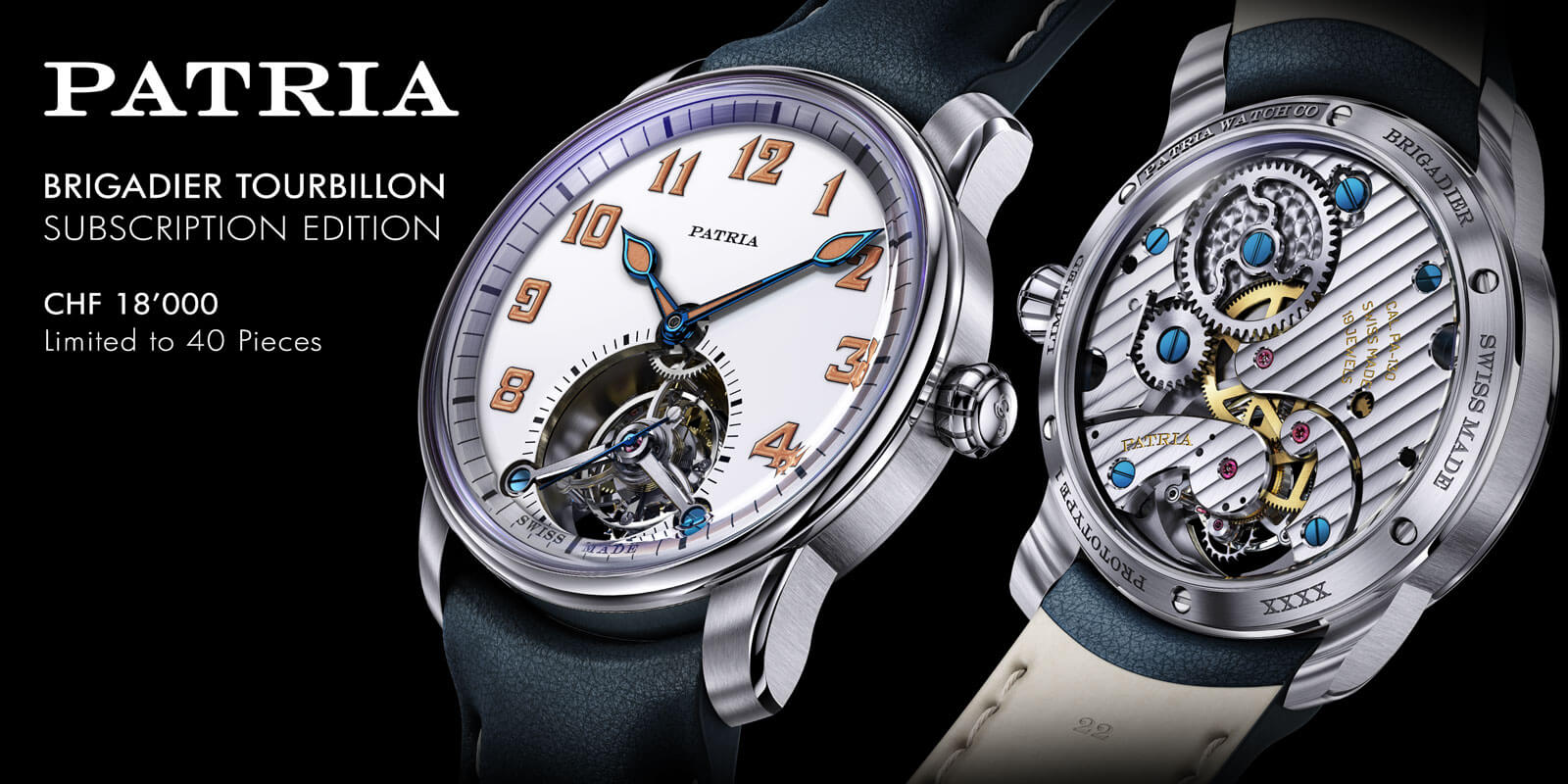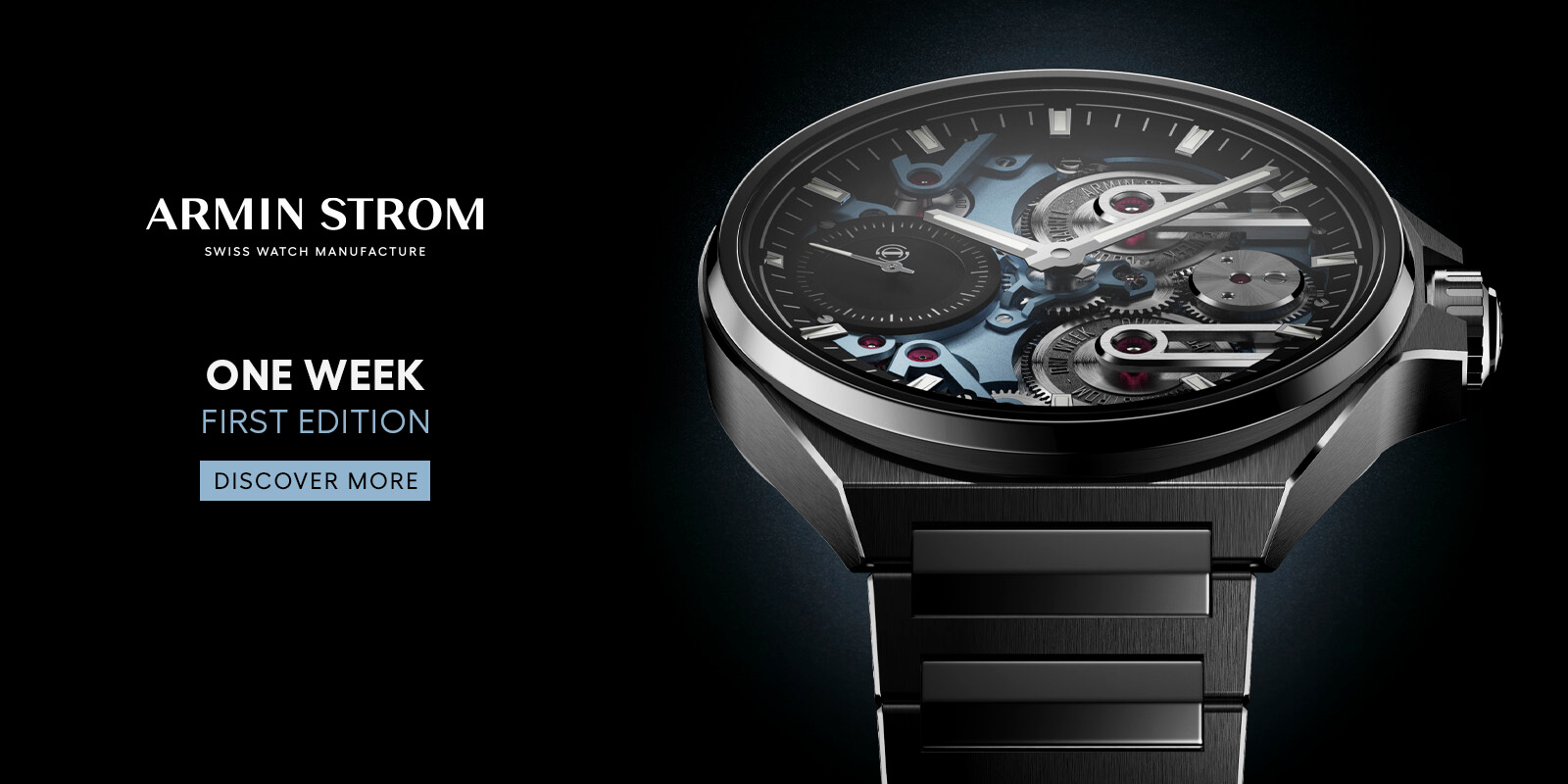Is Silicon Here to Stay in (Rolex) Watch Movements?
by Ashton Tracy
Hairsprings are miniscule. Generally, no more than one centimeter in overall diameter when coiled, they are roughly 50 microns thick and 150 microns wide.
Tiny they may be, but insignificant they are not.
In fact, they are so significant that Rolex refers to them as “the guardians of time.”

Fitting a Rolex balance wheel and Parachrom hairspring
The hairspring, which has long played a vital role in the accuracy of timekeeping, has come a long way with various technological advances over its lifetime. The latest in that long line is the silicon hairspring.
Here, I am going to compare the silicon hairspring with more traditional hairsprings currently used in watches, discussing its future and whether silicon is an improvement for today’s timekeepers. I won’t be covering all brands and types of silicon hairsprings here; I will specifically reference Rolex springs.
————————————————————————————————————–
—————————————————————————————————–
Brief history of hairsprings
Steel hairsprings were the first on the scene, but they had two drawbacks: the steel used was a ferrous metal that is easily and adversely affected by both magnetism and changes in temperature. To compensate for this, the bi-metallic temperature compensation balance was invented.
When temperature rises, a steel hairspring expands in all dimensions, therefore decreasing the rate of the watch (making it slow). On the other hand, in cold weather the steel spring contracts, becoming smaller and increasing the rate, or speed, of the watch.
To compensate for temperature changes affecting the steel hairspring, the balance wheel was made of a steel band on the inside overlaid with a brass band on the outside, leaving two cuts.

A split bimetallic balance with blued steel spring (photo courtesy VintageWatchstraps.com/David Boettcher)
Brass is not as adversely affected by temperature as steel, so the two metals worked together. With a rise in temperature, the cut ends of the balance curled inward, making the watch run faster and compensating for the spring making the watch run slower.
With lower temperatures, the opposite was true: the cut ends curled outward, thus compensating for the spring’s increase in rate. With the introduction of this temperature-compensation balance, the effect in temperature change had been largely overcome.
But one adverse issue remained: magnetism.
—————————————————————————————————–
—————————————————————————————————–
Invar, Elinvar, and Nivarox
Around the turn of the twentieth century watchmakers were introduced to Invar and Elinvar, compounds comprising iron, nickel, and chromium that were practically impervious to changes in temperature, possessing a near-zero thermal co-efficient and much less affected by magnetism.
A further improvement arrived in the 1930s when the world was introduced to Nivarox, an even better compound based off Invar but with added chromium and the new addition of cobalt, though still containing ferrous metals.
With the introduction of these new compounds, temperature compensation balances were a thing of the past. These new components were stronger, more technically advanced, wear resistant, corrosion resistant, and longer lasting – they were better in every way than previous hairsprings. A step in the right direction.
Also one important point to note is that you will read a lot of information on the internet stating that Nivarox and Elinvar are non-magnetic, but this simply is not true. Both compounds still contain ferrous metals and are therefore still magnetic. However, the effect of magnetism was significantly minimized due to other compounds being added.
However, the problem of magnetism still existed.
Rolex Parachrom hairspring
In 2000, Rolex introduced the world to the Parachrom hairspring, a true technological advancement on the horological landscape.
The Parachrom hairspring is a Rolex-patented alloy of niobium, zirconium, and oxygen.

Rolex Parachrom hairspring
Rolex states on its website that the Parachrom hairspring presents major advantages for precision timekeeping: it is insensitive to magnetic fields, offers great stability in the face of temperature variations, and remains up to ten times more accurate than a traditional hairspring in case of shocks.
Let’s break this down.
Being insensitive to magnetic fields is fantastic, a huge step in the right direction for hairspring manufacturing, Rolex created a hairspring without the presence of ferrous metals, thereby eliminating the magnetism problem.
Being stable during temperature variations is a good thing, but previous materials have achieved that just fine so at this stage we will focus on magnetism being the standout improvement.
Claims of being “ten times more accurate than a traditional hairspring in case of shocks” is great, but at this stage we have no way of verifying that without Rolex showing us test results. But what we can conclude is that the Parachrom hairspring is truly a great innovation, technologically advanced, superior in every way to earlier hairsprings, and can be maintained well into the future. Well done, Rolex.
So things were looking up for the humble hairspring, but in 2014 everything changed again.
—————————————————————————————————–
—————————————————————————————————–
Rolex Syloxi hairspring
Silicon hairsprings have been around a lot longer than 2014: Ulysse Nardin was the first to introduce this amazing feat more than ten years before (see Looking Back On 10 Years Of Ulysse Nardin’s Pioneering InnoVision Technology).
Though Rolex was part of the same Swiss research group, it took the Genevan giant a little longer to get on board.

Rolex Syloxi hairspring
The Syloxi hairspring is a silicon and silicon-composite mix, designed to overcome some of the issues faced by a traditional hairspring, and it is currently being used in Caliber 2236, which made its debut in 2014 in a ladies’ watch (see Always Expect The Unexpected: Rolex Surprises Yet Again With The Oyster Perpetual Datejust Pearlmaster 34).
Rolex explains: “Ensuring the oscillator’s regularity is one of watchmaking’s great challenges. It can only be achieved by minimizing the effects of environmental disturbances that affect the oscillator’s performance, notably temperature variations – which cause materials to expand or contract – magnetic interference, gravity and shocks.”
The Syloxi hairspring makes many of the same claims as the Parachrom spring: it is ten times more accurate when exposed to shocks, impervious to magnetism, and offers greater stability when exposed to temperature variations. However, there is one way it stands over and above the Parachrom: gravity.
Rolex has come up with a new way for the Syloxi hairspring to become more stable by changing the geometry to optimize the isochronism of the hairspring – which basically means that the balance will keep the same time regardless of amplitude.

Rolex Syloxi silicon balance spring
Factors that affect isochronism are the escapement, incorrect poising of balance and spring, play between the curb pins and the balance spring, centrifugal force, and magnetic fields. The Syloxi spring attaches to the balance staff in an entirely new way, without the need for a collet that has been pinned or glued, which enhances the flatness and concentricity of the spring. It attaches to the balance bridge via two fixed points as opposed to one on a traditional or Parachrom hairspring, making it more rigid, flat, and centered.
So is silicon really better?
I conclude that silicon hairsprings are technically better in every way.
They are better timekeepers all around, less affected by external forces, and wear less over time.
I have only one issue with silicon hairsprings: they require complex and expensive manufacturing techniques, making them limited in their lifespan.
If a vintage watch with a hairspring in desperate need of repair or replacement comes to a competent watchmaker’s bench, it is something that can be tackled. He or she could manipulate that spring or perhaps cut, pin, and time a new one from scratch, thereby breathing new life into a classic piece.
With silicon that currently isn’t possible.
However, modern manufacturing is becoming less complicated, cheaper, and more accessible by the day. Perhaps 3D printers capable of printing new silicon balance springs in a matter of minutes will be standard in all watch restoration workshops in some foreseeable future?
Silicon hairsprings are the way of the future, though. Of that I have no doubt.
They do possess real benefits for watches today. Consumers demand more from everything, including watches, and the industry is listening.
I was once a skeptic of silicon components, but having seen timekeeping results first hand I know they are here to stay.
* This article was first published on February 15, 2018 at Is Silicon Here To Stay In (Rolex) Watch Movements?
You may also enjoy:
Spending Time With The Most Complicated In-House Rolex: The Sky-Dweller
Why I Bought It: Rolex Sky-Dweller In Stainless Steel Rolesor
Rolex Milgauss Review – The Most Underrated Rolex?
Exceptional Movements In History: Rolex Caliber 1575, The Watchmaker’s Watch
Rolex Case Study: How Many Watches and How Much Money Does Rolex Make?
Rolex Submariner vs. GMT Master II: Small Differences, Difficult Decision
Leave a Reply
Want to join the discussion?Feel free to contribute!






Will an older style movement, containing a Nivarox hairspring, for example, be able to accept a silicon hairspring as a replacement? Would it be able to incorporate it into its existing structure?
Very interesting review on hairsprings. However the conclusion that silicon will be the way to go for mechabical watches does not meet my conviction. Silicon is a material coming from electronic applications and in this area it is with no doubt the most important invention ever made.
However using this material in a classic mechanical premium watch that should last for generations silicon is from my point of view the wrong choice. Perhaps you can simply redesign and replace a broken silicon hairspring in 50 or 100 years. Or not; nobody knows. All we know today is that you can bring a 100 year old watch to new life using traditional materials and tools. And silicon has with this respect still no reputation.
I’m not too surprised that no answer to my query is forthcoming. Disappointing, but not surprising. It would be an interesting subject to follow up on since silicon is the technology of the moment and seems to be finding its way into various structures and parts of mechanical movements. And because older movements may or may not be able to be retrofitted, it would seem to be a salient subject, especially for enthusiasts and collectors, and for watch blogs such as yourselves. But you don’t address it. And if you can’t or won’t find out more about it, you don’t even have the courtesy to say so. Do you know what a chucklehead is?